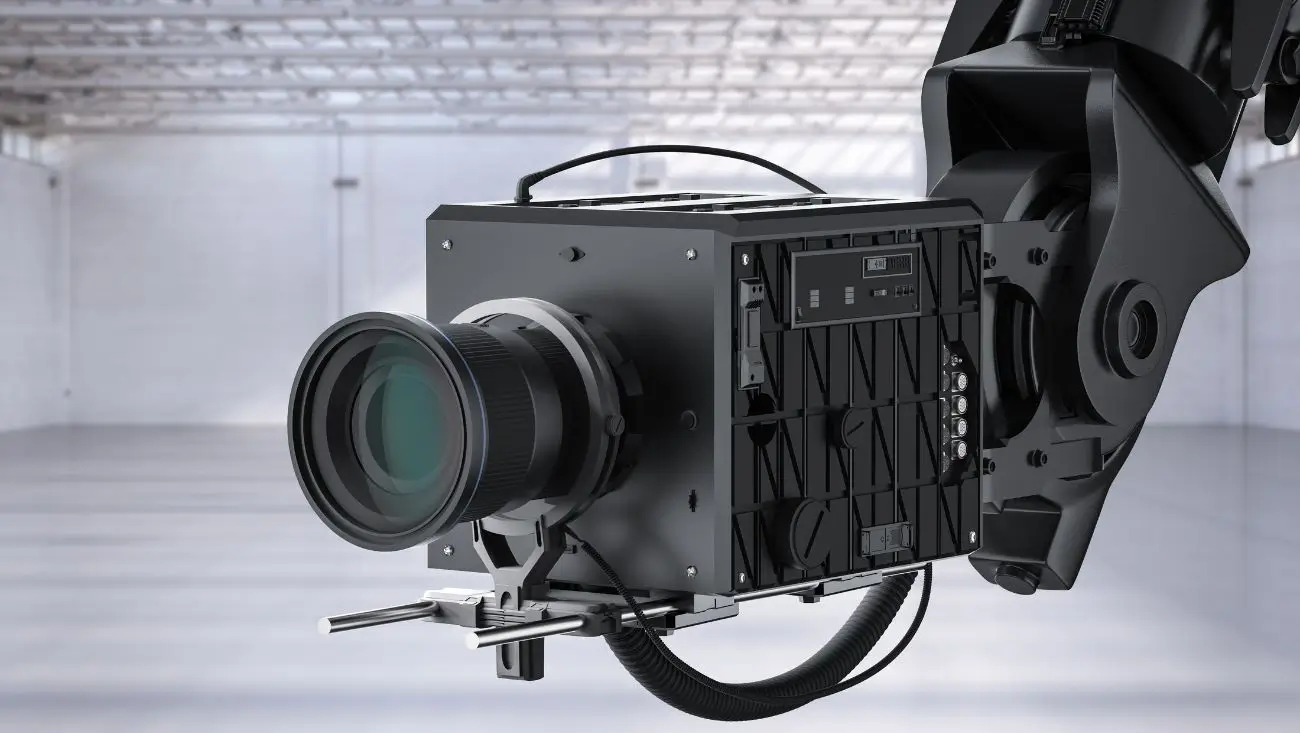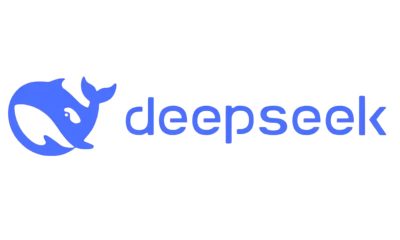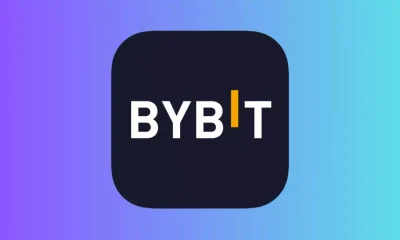AI
AI Headphones Now Translate Multiple Voices at Once in 3D Sound

A groundbreaking advancement in AI technology has arrived with new headphones that can translate multiple speakers at the same time while cloning their voices in 3D sound. Announced on May 9, 2025, by researchers at the University of Washington, this innovation promises to revolutionize how we communicate across languages, making conversations more natural and immersive. As AI continues to transform everyday devices, this development could have a big impact, though it also raises questions about privacy and accuracy.
The AI-powered headphones use advanced algorithms to identify and translate the voices of multiple speakers in real time, while also recreating their voices in a 3D audio format. This means users can hear translated speech that sounds like the original speaker, with spatial audio that makes it feel like the voices are coming from different directions—just as they would in a real conversation. Researchers explained that the system analyzes voice patterns and applies translation models to deliver seamless, natural-sounding results. This builds on existing AI language tools that have made translation more accessible, but takes it a step further by handling multiple voices at once and adding a 3D sound effect.
This technology could be a game-changer for scenarios like international meetings, travel, or even casual conversations in multilingual settings. Imagine sitting in a global conference where participants speak different languages, and the headphones let you hear everyone in your native language, with their voices sounding distinct and lifelike. The system’s ability to clone voices also makes the experience more personal, as it preserves the speaker’s tone and style. This aligns with other recent AI advancements aimed at improving communication, but the addition of 3D sound sets this apart by creating a more immersive experience.
However, there are some challenges to consider. The technology relies heavily on AI to process and replicate voices, which raises concerns about accuracy—especially for complex languages or accents. If the system misinterprets a speaker, it could lead to misunderstandings in important conversations. Privacy is another issue, as the headphones need to analyze and store voice data to function, prompting questions about how that data is handled. Similar privacy concerns have been raised with other AI devices, and users will likely want clear assurances about how their information is protected. Additionally, the system’s ability to clone voices could be misused, such as in creating misleading audio, a growing worry in the age of cybersecurity threats.
The researchers noted that the technology is still in development, with plans to improve its accuracy and address ethical concerns before it hits the market. They’re also working on making the headphones more affordable, as the current prototype requires advanced hardware that might be costly for the average consumer. If successful, this could become a mainstream tool for breaking down language barriers, much like how AI-driven innovations have made learning and communication easier in other areas. For now, the team is focused on testing the system in real-world settings, such as multicultural workplaces, to refine its performance.
This development highlights the growing role of AI in enhancing how we connect with others, especially in a globalized world where language differences can be a barrier. It also shows how AI is being integrated into everyday devices like headphones, making advanced technology more accessible. However, the balance between innovation and responsibility will be key as this product moves forward. Users will need to weigh the benefits of seamless translation against potential risks, especially when it comes to data security.
The AI headphones with multi-voice translation and 3D sound are an exciting step forward in communication technology. As researchers continue to improve the system, it could soon change how we interact in multilingual settings, making conversations more natural and inclusive. What do you think about this new AI headphone technology, and would you use it to bridge language gaps? Share your thoughts in the comments—we’d love to hear your perspective on this innovative breakthrough.
AI
Brace Yourselves! YouTube AI Ads Will Now Hit You at Videos’ Most Exciting Moments

The way you watch videos online is about to change, as YouTube AI ads are getting a significant, and potentially very disruptive, makeover. At its glitzy Brandcast 2025 event, YouTube, owned by Google, officially announced new advertising strategies that leverage artificial intelligence, including Google’s powerful Gemini model. The most talked-about feature? Ads strategically placed during “peak moments” of viewer engagement in videos. This means just when you’re at the climax of a tutorial, the punchline of a comedy sketch, or a critical moment in a music video, an ad might pop up.
This bold move with YouTube AI ads is designed to make advertising more effective for brands by capturing viewers when their attention is supposedly at its highest. However, for many users in the USA and across the globe, this could translate to more frustrating and intrusive ad experiences. The company argues that AI will help identify these “organic engagement cues” to deliver ads that are contextually relevant and less jarring, but the proof will be in the pudding for viewers.
What These New YouTube AI Ads Mean for You
The core idea behind these new YouTube AI ads is “Peak Points.” YouTube’s AI, likely enhanced by Gemini, will analyze video content to identify moments of high viewer engagement – think laughter spikes, gasps, or moments of intense focus. Instead of just pre-roll, mid-roll, or end-roll ads, commercials could now be dynamically inserted at these very junctures. This could make ads harder to ignore, but also potentially more annoying if not implemented with extreme care.
Here’s what you need to know about the coming changes:
- Ads at “Peak Moments”: The AI will try to find natural breaks or heightened engagement points within videos to serve ads. YouTube suggests this could lead to fewer, but more impactful, ad interruptions overall for some content if it means shorter ad pods at these key times.
- Gemini-Powered Ad Experiences: Google’s Gemini AI will be used to create more “contextually relevant and engaging” ad experiences. This could mean ads that are better tailored to the content you’re watching or even interactive ad formats powered by AI.
- Focus on CTV and Shorts: YouTube is particularly emphasizing these new ad strategies for Connected TV (CTV) viewing, where it sees massive growth, and for its short-form video platform, Shorts. This indicates a push to monetize these rapidly expanding areas more effectively. This strategy to boost monetization is also seen with other platforms like Netflix rapidly expanding its ad-supported tier.
While YouTube frames these YouTube AI ads as a way to create a “better viewing experience” by making ads more relevant and less like random interruptions, many users are skeptical. The prospect of an ad appearing right at a video’s most crucial point has already sparked considerable online debate and concern. The fear is that it could disrupt the viewing flow and lead to “ad fatigue” or even drive users away. The effectiveness of AI in truly understanding nuanced human engagement without being intrusive will be a major test. Concerns about AI intrusiveness are common, even in positive applications like Google’s new AI accessibility features which aim to be helpful without overstepping.
For advertisers, however, these new YouTube AI ads present an enticing opportunity. The promise of reaching viewers when they are most attentive, combined with the power of Gemini for better targeting and creative ad formats, could lead to higher conversion rates and better campaign performance. YouTube is clearly trying to offer more value to brands in an increasingly competitive digital advertising market. This push for innovation in ad tech mirrors how other companies are leveraging AI, such as the partnership aiming to create an AI film company to optimize movie production.
The “Peak Points” ad strategy also raises questions about the future of ad-blockers and YouTube Premium subscriptions. As ads potentially become more deeply integrated and harder to skip with the help of AI, users might feel more compelled to subscribe to YouTube Premium for an ad-free experience. This could be an intentional part of YouTube’s strategy to boost its subscription revenue. The balance between free, ad-supported content and paid subscriptions is a constant challenge for platforms. Similar debates around platform policies and user experience have occurred with services like SoundCloud and its AI training policies.
Ultimately, the success of these new YouTube AI ads will depend on a delicate balance. If the AI is truly intelligent enough to identify genuinely opportune moments for ads without ruining the viewing experience, it could be a win-win. But if it leads to more frustration, it could backfire spectacularly. Viewers will be the ultimate judges when these features roll out more broadly. As AI becomes more pervasive, understanding its impact is crucial, even when it’s used for seemingly beneficial purposes like Meta AI Science’s open-source tools for research.
AI
Groundbreaking Google AI Accessibility Tools Transform Android & Chrome!

The latest Google AI accessibility advancements are poised to dramatically reshape the digital landscape for users with disabilities. Timed perfectly for Global Accessibility Awareness Day (GAAD) 2025, Google has officially unveiled a suite of powerful new features for Android and Chrome. These updates prominently feature the integration of Google’s cutting-edge Gemini AI into TalkBack, Android’s screen reader. This empowers the tool to intelligently describe images and even answer specific user questions about visual content, thereby unlocking a much richer online experience for individuals who are blind or have low vision.
This significant push in Google AI accessibility underscores a deep-seated commitment to making technology universally usable. For the vast number of Americans and global users who depend on accessibility features, these enhancements promise a more intuitive and empowering daily digital interaction. The capability of TalkBack, now supercharged by Gemini, to move beyond basic image labels and provide intricate descriptions and contextual details about pictures represents a monumental leap. Users can now gain a far better understanding of photos shared by friends, products viewed online, or complex data visualizations.
New Google AI Accessibility Features: What Users Can Expect
A standout element of this Google AI accessibility initiative is undoubtedly the Gemini integration with TalkBack. Traditional screen readers often struggle with images lacking descriptive alt-text. Now, Gemini enables TalkBack to perform on-the-fly analysis of an image, generating comprehensive descriptions. What’s more, users can interact by asking follow-up questions such as, “What is the person in the photo wearing?” or “Are there any animals in this picture?” and Gemini will provide answers based on its visual comprehension. This interactive element makes the visual aspects of the web far more accessible. These advancements mirror the broader trend of AI enhancing user experiences, seen also with OpenAI’s continuous upgrades to its ChatGPT models.
Beyond the Gemini-powered TalkBack, other crucial Google AI accessibility updates include:
- Crystal-Clear Web Viewing with Chrome Zoom: Chrome on Android is introducing a significantly improved page zoom function. Users can now magnify content up to 300%, and the page layout smartly adjusts, with text reflowing for easy reading. This is a fantastic improvement for users with low vision.
- Smarter Live Captions for All Audio: Live Caption, the feature providing real-time captions for any audio on a device, is becoming more intelligent. It promises enhanced recognition of diverse sounds and speech, along with more options for users to customize how captions appear.
- Enhanced Smartwatch Accessibility: Google is also extending its Google AI accessibility focus to Wear OS. This includes more convenient watch face shortcuts to accessibility tools and improved screen reader support on smartwatches.
These Google AI accessibility tools are not mere incremental updates; they signify a dedicated effort to employ sophisticated AI to address tangible challenges faced by individuals with disabilities. Developing such inclusive technology is paramount as digital platforms become increasingly integral to all facets of modern life, from professional endeavors and education to social engagement and e-commerce. This commitment to using AI for societal benefit offers a refreshing contrast to concerns about AI misuse, such as the proliferation of AI-generated deepfakes.
The positive impact of these Google AI accessibility updates will be widespread. For people with visual impairments, the Gemini-enhanced TalkBack can make a vast amount of previously out-of-reach visual information accessible, promoting greater autonomy. For individuals with hearing loss, the upgraded Live Caption feature ensures better comprehension of video content, podcasts, and live audio. Similarly, users with low vision or dexterity issues will find the improved zoom and Wear OS functionalities make interactions smoother and more efficient. This dedication to accessibility is commendable, akin to how Meta AI Science is championing open access to scientific tools for broader benefit.
Google’s strategy of integrating these powerful features directly into its core products, Android and Chrome, ensures they are available to the broadest possible user base. This mainstreaming of accessibility is a significant statement and sets an important precedent for the technology industry. It highlights a growing recognition that accessibility is not a peripheral concern but a core tenet of responsible and effective technology design. As AI continues to advance, its potential to assist accessibility grows, though it simultaneously brings new ethical considerations, as seen in discussions around AI’s role in the film industry.
The GAAD 2025 announcements are a testament to Google’s ongoing dedication to building inclusive products. While these new Google AI accessibility tools represent a major stride, the path toward a completely inclusive digital environment is one of continuous improvement. User feedback and relentless innovation will be crucial for refining existing features and pioneering new solutions to meet the diverse needs of all users.
AI
Groundbreaking AI Film Company Launched by Brilliant Pictures and Largo.ai, Set to Reshape Movie Making

LONDON, UK – The landscape of film production may be on the cusp of a significant evolution with the announcement of a new AI film company. This venture, a collaboration between UK production house Brilliant Pictures and Swiss AI specialist Largo.ai, is being positioned as potentially the “first fully AI-automated film company.” The initiative intends to deeply embed artificial intelligence tools throughout the movie-making process, from initial script assessment to forecasting commercial success, a move that is generating keen interest and discussion across the entertainment industry in the United States and internationally.
The core of this partnership lies in integrating Largo.ai’s advanced AI platform into the operational framework of Brilliant Pictures. The ambition for this AI film company extends beyond using AI for isolated tasks; it envisions a comprehensive application of artificial intelligence to enhance efficiency and decision-making at multiple stages of film production. This includes leveraging AI for in-depth script analysis, providing data-driven casting insights, predicting a film’s box office potential, and optimizing marketing strategies.
The Strategic Impact of an AI Film Company on Cinematic Production
The formation of a dedicated AI film company carries substantial implications for the film industry. For Brilliant Pictures, this strategic alliance offers the potential to make more informed, data-backed decisions, mitigate the financial risks inherent in film production, and possibly identify commercially viable projects or emerging talent that might be overlooked by conventional methods. Largo.ai’s platform is recognized for its capacity to deliver profound analytical insights by processing extensive datasets related to film content, audience responses, and prevailing market trends. Such a data-centric methodology could result in films more precisely aligned with audience preferences, thereby potentially boosting their market performance.
Key operational areas where this AI film company intends to deploy AI include:
- Script Evaluation and Refinement: AI algorithms can meticulously dissect screenplays, identifying narrative strengths and weaknesses, character development arcs, and even forecasting audience reactions across different demographics, thereby informing script enhancements prior to production.
- Casting Process Augmentation: AI can sift through extensive actor databases, evaluating past performances, audience appeal metrics, and potential on-screen chemistry with other actors to propose optimized casting choices.
- Financial Viability Forecasting: Predicting a film’s financial outcome is a critical challenge. AI models, by analyzing a multitude of variables, can offer more robust financial forecasts, assisting producers in making more confident greenlighting and investment decisions. The quest for better financial models is ongoing in media, as evidenced by Netflix’s successful expansion of its ad-supported tier.
- Marketing and Distribution Optimization: AI can assist in pinpointing target audience segments and recommending the most effective marketing campaigns and distribution plans for specific films.
While the proponents of this AI film company highlight the potential for increased efficiency and creative support, the announcement has also understandably prompted discussions about the future of human roles within the entertainment sector. A primary concern is the potential effect on employment for professionals whose tasks might be augmented or automated by AI, such as script analysts, casting associates, or market researchers. The creative community remains highly attuned to AI’s growing influence, a sensitivity also seen in debates concerning AI’s role in music creation and artist remuneration, exemplified by the SoundCloud AI policy discussions.
Furthermore, broader questions arise regarding the artistic integrity of films produced with significant AI involvement. Can AI truly replicate the nuanced understanding of human emotion, complex storytelling, and cultural context that human creators bring? Some industry observers worry that an excessive dependence on AI could lead to more homogenized, risk-averse content that prioritizes predictable commercial success over bold artistic expression. The unique, often unquantifiable elements of creative genius could be marginalized if algorithmic predictions heavily influence creative choices. This concern is not unique to film, as similar issues arise with AI-generated imagery and the potential for deepfakes of public figures.
However, the leadership behind this AI film company asserts that the intention is for AI to serve as a powerful tool to assist and enhance human creativity, rather than to supplant it. The argument is that by automating more data-heavy and analytical tasks, AI can liberate human filmmakers to concentrate more fully on the core creative aspects of their work. The stated aim is to streamline the production process and improve the probability of creating films that are both critically acclaimed and commercially successful. The responsible and transparent use of AI is a key factor here, similar to OpenAI’s initiatives to share more about its AI model safety testing.
The Brilliant Pictures and Largo.ai partnership represents a forward-looking experiment that will undoubtedly be scrutinized by the global film industry. Should this AI film company achieve its objectives, it could catalyze a broader adoption of AI technologies in filmmaking, fundamentally reshaping industry practices from conception to audience engagement. While this journey is in its nascent stages, the narrative of Hollywood’s future now clearly includes a significant role for artificial intelligence. The continuous integration of AI into various sectors is evident, paralleling advancements like Meta AI Science’s contributions to open-source research tools.
-

 AI3 months ago
AI3 months agoDeepSeek AI Faces U.S. Government Ban Over National Security Concerns
-

 Technology2 months ago
Technology2 months agoiPhone 17 Air and Pro Mockups Hint at Ultra-Thin Future, Per Leaked Apple Docs
-

 AI2 months ago
AI2 months agoGoogle Gemini Now Available on iPhone Lock Screens – A Game Changer for AI Assistants
-

 Technology3 months ago
Technology3 months agoBybit Suffers Record-Breaking $1.5 Billion Crypto Hack, Shaking Industry Confidence
-

 Technology3 months ago
Technology3 months agoPokémon Day 2025 Celebrations Set for February 27 With Special Pokémon Presents Livestream
-

 AI2 months ago
AI2 months agoOpera Introduces AI-Powered Agentic Browsing – A New Era for Web Navigation
-

 Technology2 months ago
Technology2 months agoApple Unveils New iPad Air with M3 Chip and Enhanced Magic Keyboard
-

 AI2 months ago
AI2 months agoChina’s Manus AI Challenges OpenAI with Advanced Capabilities
